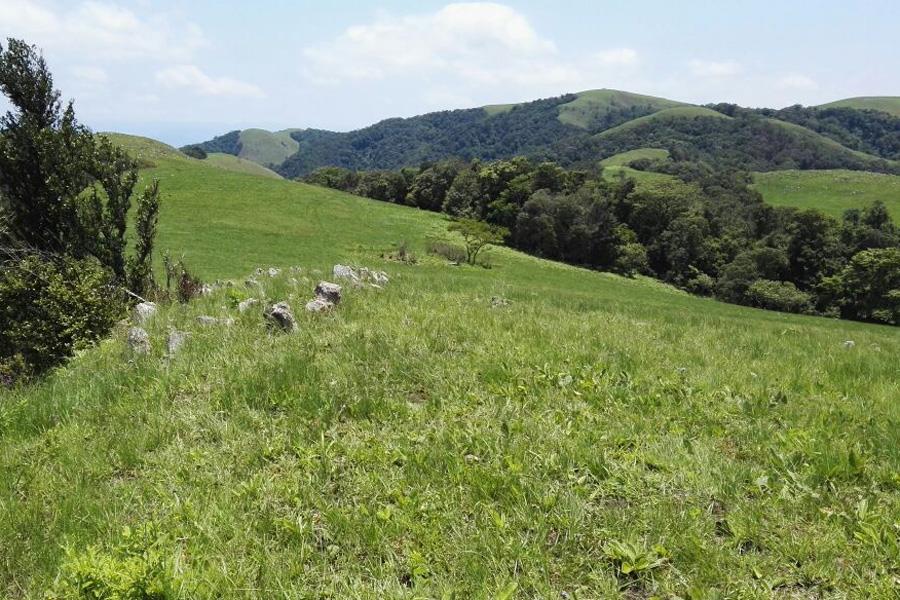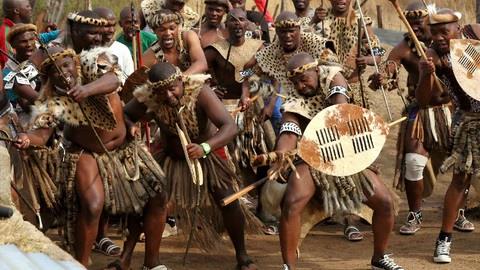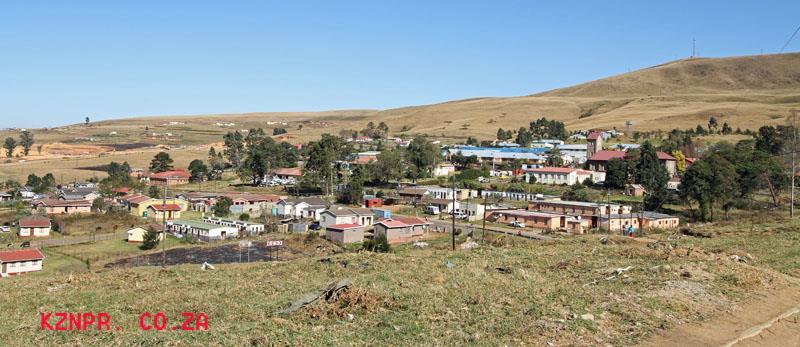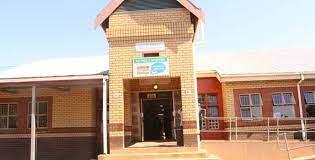Nkandla promotional information
Tourism in Nkandla

IDENTIFIED ATTRACTIONS (HISTORICAL) SITES
The land of Nkandla is connected to the significant history of the Zulu nation, including the formation of the great Zulu by King Shaka. It is home to few colonial battle fields and some of the nature conservation sites of the region. The history of the early normadic and hunter gatherers communities of South Africa can be traced in the area through local legend stories and evidence of early cave dwelling.
Nkandla Forest Complex (NFC)
This is the main nature conservation complex in the area that consists of a number of nature reserves as follows:
Nkandla Forest Reserve
Dhlabe Nature Reserve
Edodweni Nature Reserve
Mome Nature Reserve
Sibudeni Nature Reserve
Vungwini Nature Reserve
Nkandla Forest reserve is situated 50km north-west from the town of Eshowe and 20km south of the town of Nkandla, and it fall within the sphere of Nkandla Municipality.
Nkandla Forest Reserve offers low scale tourist activities such as walking trails, picnic sites and bird watching. Among the species of interest found in the Nkandla Forest Complex is a pletora of butterfly species that are endemic and restricted to Kwazulu-Natal, such as the Karkloof Blue (Orachrysops ariadne), Zululand Emperor Swallowtail (Papilio ophidicephalus zuluensis), and the Silver-barred Charaxes (Charaxes druceanus druceanus) (Ezemvelo KZN Wildlife, nd.).
Nkandla forest holds one the sacred points in the land of the Zulus as King Cetshwayo was burried in this forest.
UFA (CAVE)
Ufa, meaning cave, is one of the attraction sites found in Nkandla. This is the original place of the Shezi clan.
NTABA NDINDINDI (EGCEBENI)
Unique stones used for making cups were found in Nkandla’s Ndindindi Mountain. Zulu culture requires visitor permission from Inkosi for the site. This rule was broken by the diggers, leading to an accident where a tractor disappeared into a hole.
NQABA KADLABA (ITSHE LIKAFALAZA)
This is where UNqaba kaDlaba was hiding during the 1906 war that was between the British and the Zulu people..
ITSHE LIKADLABA (CHAIR OF AMAKHOSI)
The “isihlalo samakhosi” stone in Nkandla serves as a throne for the Shezi Clan. It’s where Mvakela witnessed Shaka’s battles and where news of Inkosi’s death was received.
UMTHOMBO KADLABA
According to our source, Umthombo kaDlaba is where Inkosi Dlaba used to drink water at after his long journey. He used to drink water in this whole then seat on the stone next to umthombo and rest.
INKOSI (KING) CETSHWAYO'S GRAVE
King Cetshwayo died far from home. His decomposing body couldn’t reach the royal residence, so local Nkandla chiefs provided a burial site. His grave is still in Nkandla Forest.
SHUKULASE `S GRAVEShukulase `s grave: Inkosi Shukulase was one of the leaders in the history of Shezi clan. The first leader was Inkosi Shezi; Shukulase was the 2nd leader of the Shezi clan. Shukulase was the son of Inkosi Shezi. At that time, Inkosi Shukulase was living in a place called Ofeni; He moved to live at Mathiya. He died as a citizen of Mathiya in Nkandla. His grave is near Mathiya Primary school about 5km from Nkandla Forest; it’s not exactly the grave. The picture of the tree is the sign of his grave; No one knows exactly the date of his death.
INKOSI ZOKUFA `s GRAVEInkosi Zokufa: According to the Zulu History, during the time of our forefathers, when the king pass away they were not buried like all people, they sit. Inkosi Zokufa was the son of Mamhlongo (MaMhlongo and Shaka ` s mother were siblings). Inkosi Zokufa was also one of the leaders who fought during the 1906 war (the battle between the Zulus and the British). He was the resident of Ophindweni in Nkandla. Inkosi Zokufa is the one who hammer the shield, the one Inkosi Shaka used to build his Zulu Kingdom.
MJADU `s GRAVEMjadu and Ndabaningi were sons of Sgananda. Mjadu, the son of Magazu, became the inkosi (chief) because his nephew Mdedana was too young to assume the throne. Mjadu ruled from 1906 to 1914, had two wives, Mantombela and MaMkhize, and died in 1920 due to stress. After Mjadu’s death, Nqama, who was not a family member, became the inkosi until Mdedana took over in 1923. In 1913, a portion of the land was given to the current traditional leadership by the whites. Mjadu died as a citizen of Nomahlosi, and the river was named uMasimba.
Culture of Nkandla community

Community Culture
Cultural Events:
Nkandla is a rural community under the rule of traditional leadership, all cultural ceremonies of the Zulu culture are observed in Nkandla. The rural people of Nkandla participate in umkhosi womhlanga (reed dance) at the nearby Nongoma area of Zulul royal residence and all other big cultural events hosted by the Zulul King.
Food:
Staple (common) Foods: Phuthu and pap, samp and mielie rice (dry and wet maize meal dishes and cooked semi-ground and medium ground maize), boiled corn, amaranthas, beaf, lamb and goat meat, etc. Umqombothi (traditional beer) is a common beverage, although now modern liquar is consumed more frequently than traditional beer.
Language:
IsiZulu is the soul local indigenous language of Nkandla community. English is mostly used to communicate with people of other races and those foreign to Zulu speaking communities.
Ethnicity:
The majority of the population in Nkandla are Zulu by ethnicity.
History of Nkandla

Early History
The inhabitation of the land of Nkandla predates the history of King Shaka and the formation of the Zulu nation. Evidence of early rock art depicting the era of cave dwellers is evident in the area some folk stories point to the history of early community in the area before the error of Shaka Zulu. The area features in the history Shaka's rising as he used it as a hold for hiding his livestock during his early battles with other local chiefdoms. One of the communities in the area during Shaka's rising were iron crafters (blacksmiths) who supplied his army with spears forged from iron ore.
Colonial history
The famous Bhambata Rebellion or Zulu Rebellion(1906) was launched from Nkandla using Nkandla forest as a base for launching guerilla attacks at British colonial armies.
Local heros of colonial struggle
Sigananda kaZokufa (c. 1815–1906) was a son of Zulu chief Zokufa. In an address by Mangosuthu Buthelezi at Endlamadoda-Nkandla on 15 September 2001 he said ‘’that Inkosi Sigananda's grandfather was Inkosi Mvakela, who married a sister of Nandi, King Shaka's mother, and that his father was Inkosi Zokufa’’. He also said he had a son called Ndabaningi. At this occasion he unveiled a monument to Inkosi Sigananda.
Inkosi Sigananda was recruited as a warrior at a very young age and sow a great deal of military action in his lifetime. He witnessed the death of Piet Retief at Mngungundlovu in 1838. Sigananda fought on the side of the Usuthu during the great Thugela Battle on 2nd of December 1856 and also against the British in the Zulu war of 1856. He fled to Natal to seek refuge in the clan of Manciza, who was the father of inkosi Bambatha. In 1871 he accepted an invitation by King Cetshwayo to settle in Kwazulu. He fought for king Cetshwayo during the Zulu war, seeing kwazulu restored in January 1883.
In 1906 Sigananda joined Chief Bambata (also Bhambata) and other chiefs in the rebellion against the imposition of the Poll Tax By the colonial government. During the rebellion, Sigananda’s kraal burned and his stronghold attacked by the Zululand police. Many people fled their homes in fear. Bambatha was killed and Sigananda and Mangati became fugitives, successfully evading the government’s troops for some time. Yet knowing the loss would be too great if the fight was to continue, inkosi Sigananda surrendered and was immediately placed in prison. During his short imprisonment, inkosi Sigananda seemed in good health and quite communicative. Yet his body was unable to adapt to the changed circumstances of prison and he died in June 1906 in the INKANDLA jail.
About Nkandla community

About Nkandla community
Community of Nkandla and its Leadership
Nkandla Municipality is a rural area that is under the rule of traditional leadership. There are 17 amakhosi (traditional leaders) presiding over different traditional alotments of land within the municipality.
The following amakhosi (local chiefs) preside over land alotments dermacated according to their ancestral chiefdoms. These lands are administered under Nkandla Municipality;
1. Inkosi Biyela - eMahlayizeni
2. Inkosi Xulu - Kwa Xulu
3. Inkosi Ntuli (1) - Kwa Ngono
4. Inkosi Ntuli (2) - Kwa Godide
5. Inkosi Mchunu - Kwa Cunu
6. Inkosi Zondi - Kwa Zondi
7. Inkosi Sibisi - Kwa Chwezi (Chwezi)
8. Inkosi Dhlomo - Kwa Khabela (Khabela)
9. Inkosi Mbhele - Amaphuthu (eMaphuthu)
10. Inkosi Shezi - Chube (eMachubeni)
11. Inkosi Mpungose - KwaMpungose 'Nkandla
12. Inkosi Biyela - eMangidini
13. Inkosi Khanyile - Izindlozi
14. Inkosi Magwaza - Kwa Magwaza
15. Inkosi MT. Zuma - Kwa Nxamalala
16. Inkosi Shange - KwaShange
17. Inkosi Zulu - Bangindoda (eZigqozeni)
All the communities under the above amakhosi are jointly represented in the IKS documentation project with the assistence of the Nkandla local municipality.
The Special IKS Committee of Nkandla
After the arrival of the IKS documentation project at Nkandla, the local amakhosi under the municipality came together, following the pilot phase of documentation and established a special IKS committee to work with University of Zululand and Nkandla Municipality. Inkosi ME. Dhlomo was elected by amakhosi (local traditional leaders) as chair of the committee. This committee was made out of few elected traditional leaders and some members (leaders) of the local community, including 1 official of the local municipality.
All the IKS documentation and the related activities of the IKSDC at Nkandla were carried out under the oversight of the Nkandla IKS Committee. In 2018, the Memorandum of Agreement (MoA) was signed between the bigger body (district house of traditional leadership) community leadership and the IKSDC (University of Zululand), and the new district committee was formed, chaired by the same Inkosi ME Dlomo. While the Nkandla IKS Committee still operate, it operates under the district IKS comittee as the main body.
Nkandla Municipality

About Nkandla municiaplity
Community Location
GPS Location: 28.37.233-S-31.05.292-E
It is in Nkandla, the Nkandla community reside in the Nkandla homeland that is administrated by Local Traditional Leaders (AmaKhosi). There 17 Traditional Leaders that form part of the local municipality of Nkadla, with a small portion of traditional leadershi dermacation falling outside of Nkandla Municipality into the durisdiction of Nquthu Area. The 17 Traditional Leadership Councils are as follows:
1. Khabela Traditional Leadership: Inkosi ME Dhlomo
Address or Well Known landmark:
Nkandla Town: Municipality Complex, Magistrate Court, Police Station (Near Nkandla Indigenous Forest and Zuma Homestead)
Municipality:
Nkandla (Rural) Local Municipality - Under King Cetshwayo District Municipality
Physical Address:
Marêe Road, lot 292, Nkandla
Tel: + 27 35 833 2000 (ext. 2044/6 / Fax: + 27 35 833 2044
Enquiries:
Tourism Officer E-Mail: zmajozi@nkandla.org.za
Website: http://www.nkandla.com

